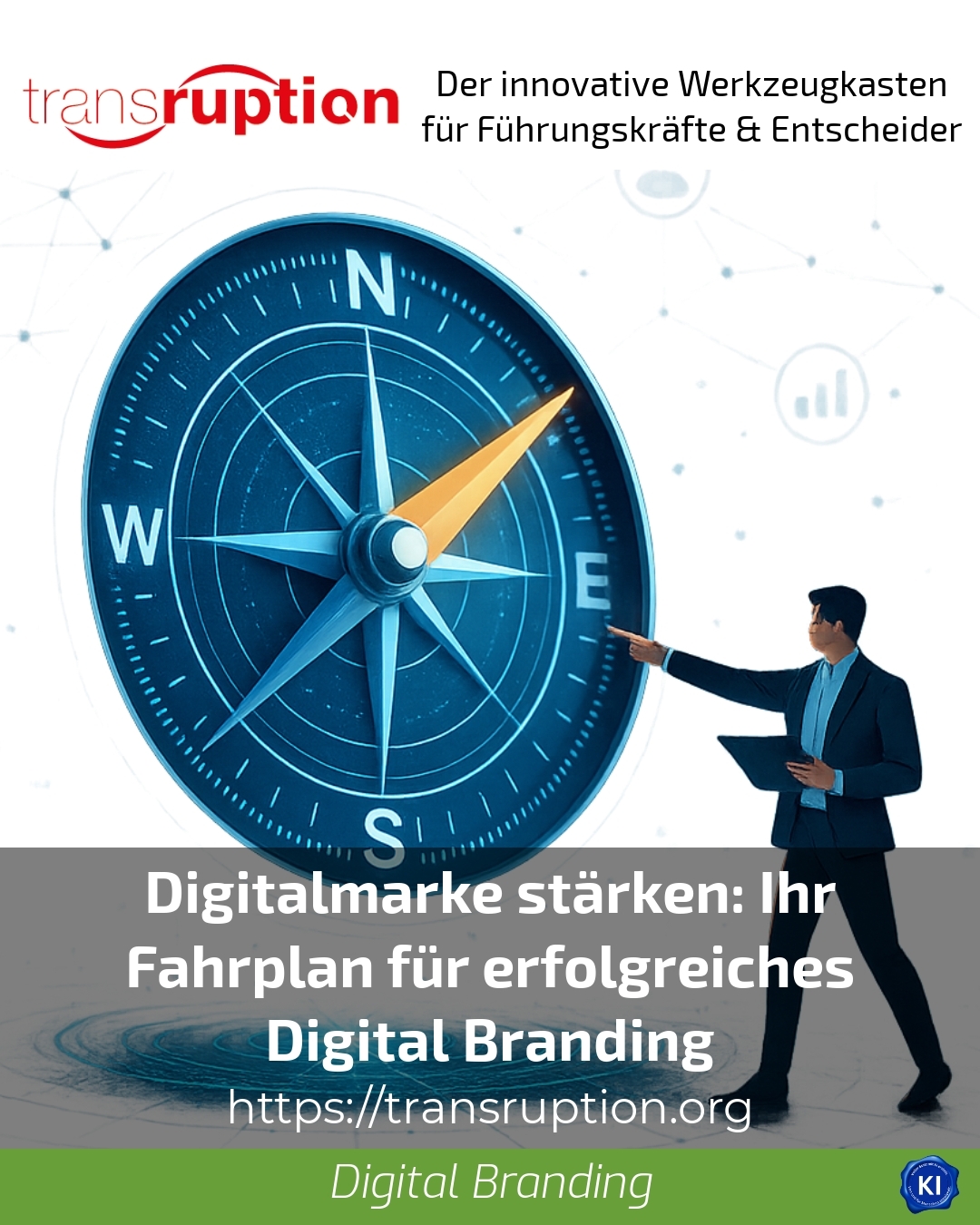Strategic development and strengthening of the digital brand: a well thought-out roadmap
In today's digital world, the digital brand plays a central role for companies that want to be visible and successful in the long term. Interested parties often come to me with questions about how they can strengthen their digital brand and position it sustainably online. I support them by providing impetus and guiding them along the way. The focus is on strategically planning digital brand projects without making any real promises, but rather offering guidance.
Define goals for strengthening the digital brand
The first step in a successful roadmap is to clearly define the goals. It is important to develop concrete ideas about what you want to achieve with the digital brand. Clients often report that they want to achieve greater brand awareness, more qualified visitors or better customer loyalty. These goals are developed together in a workshop in order to make them measurable and realistic. This creates a solid foundation on which all further measures can be built.
BEST PRACTICE at company XYZ (name changed due to NDA contract) In a coaching session, we worked out together that the goal was to increase monthly website traffic by 25 per cent. At the same time, the digital brand was to become visible online with clear values and a consistent image. Thanks to targeted measures, the company was able to notice the first positive changes after a short time without feeling overwhelmed.
Data-based analysis of the current situation
A well-founded analysis is crucial in order to realise the full potential of the digital brand. This involves looking at the existing digital presence as well as competitors and relevant industry key figures. Understanding target group behaviour, keywords used and online visibility is essential. This provides valuable insights into where there is a need for action and which opportunities can be utilised.
In this context, the website is closely scrutinised. Questions about user-friendliness, loading times and the information on offer take centre stage. The user experience in particular has a decisive influence on how visitors perceive the digital brand and whether they are encouraged to return.
BEST PRACTICE at ABC (name changed due to NDA contract) A review of the website revealed that although content was available, it was not clearly structured. Together, the information architecture was redesigned and texts were adapted so that they were easier to understand and more relevant for the target group. The result was a significant increase in the time spent on the site and a more positive assessment of the digital brand.
Targeted content and SEO strategies for a stronger digital brand
Content is the centrepiece of the digital brand. The targeted creation of high-quality content that is precisely tailored to the needs of the target group strengthens trust and brand loyalty. At the same time, search engine optimisation (SEO) is essential to remain visible in the mass of offers. The combination of relevant keywords, good page structure and technical optimisation can significantly increase the reach of the digital brand.
Many clients report that they receive positive feedback through the continuous publication of blog articles, instructions or videos. This is supported by analysing which topics are particularly popular and how they can be communicated in the best possible way. It is important to offer readers real added value and to constantly adapt the content so that it matches the current search queries.
BEST PRACTICE at DEF (name changed due to NDA contract) The continuous publication of practice-orientated blog posts with relevant keywords and links to suitable offers has led to the digital brand being perceived as trustworthy and competent. This has increased visibility in search engines and attracted more qualified visitors.
Use digital marketing channels sensibly
Choosing the right channels is another important point for strengthening the digital brand. Social media is often used as an effective tool to build credibility and enable direct communication with the target group. However, email marketing and paid online advertising also play a role in making the digital brand memorable.
The aim is to strategically combine channels and regularly share content that suits the brand. In doing so, I always help to formulate clear messages and design campaigns in such a way that they both attract new customers and retain existing ones.
Continuous monitoring and adjustment of the timetable
A successful roadmap is not a rigid concept. If the digital landscape requires changes, strategies must also be constantly reviewed and adapted. Monitoring relevant key figures and feedback from the target group help to recognise weaknesses and identify new opportunities.
For example, I support clients with regular check-ins to analyse the impact of the measures. Together, we identify which impulses make sense so that the digital brand continues to grow and the appearance is adapted to the changing requirements.
My analysis
Many companies want a strong and authentic digital brand. With a clearly structured roadmap tailored to your own company, it is possible to tackle digital projects in a well-founded manner. It is important to define goals precisely, analyse data and find the right mix of content, SEO and digital marketing. Continuous support provides orientation and helps to strengthen the digital brand presence step by step and make it sustainable.
Further links from the text above:
Digital marketing roadmap: definition and creation - Landingi [1]
SEO marketing - What is it and how does it work? (Tips) [2]
Digital timetable | digital now [4]
Search engine optimisation: An SEO guide [5]
For more information and if you have any questions, please contact Contact us or read more blog posts on the topic TRANSRUPTION here.


























